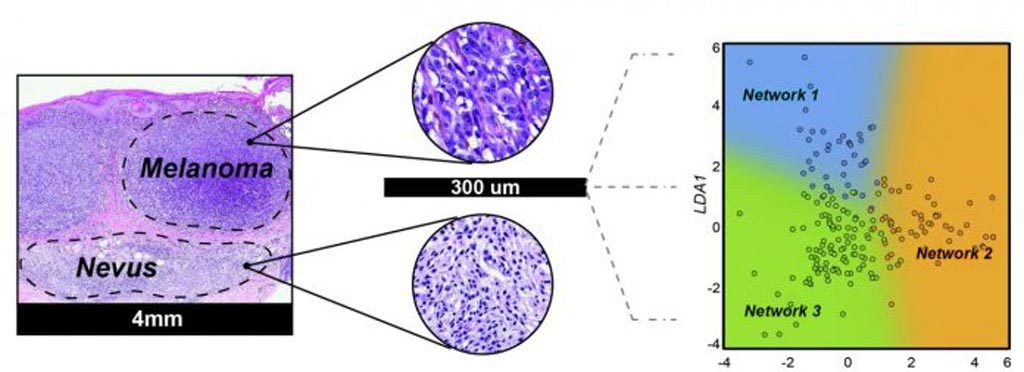MicroRNA Ratios Differentiate Melanomas from Nevi
By MedImaging International staff writers
Posted on 15 Oct 2019
A new study shows how an optical discrimination platform can detect malignant characteristics in a melanocytic tumor using specific microRNA (miRNA) patterns.Posted on 15 Oct 2019
Developed at the University of California, San Francisco (UCSF; USA), the University of Utah (Salt Lake City, USA), and other institutions, the new technique applies a machine learning-based pipeline to a dataset consisting of genetic features, clinical features, and next-generation microRNA sequencing to tissues samples, in order to distinguish melanomas and their adjacent benign precursor nevi. The ML technique can detect eight specific expression ratios of miRNA patterns in the micro-dissected sections.

Image: MicroRNA sequencing and optical algorithms can detect melanoma cells in skin tumors (Photo courtesy of Rodrigo Torres/ UCSF).
For the study, the researchers examined 82 biopsy specimens of moles and malignant melanomas, 41 of each type, taken from the medical records of the UCSF dermatopathology section. They then compared the new optical method of detecting malignant melanoma cells with the actual recorded outcomes. The results revealed a sensitivity of 81% and specificity of 88%, which was uninfluenced by either the age of the patient or by the presence of a large amount of benign cells in the same tumor. The study was published on June 20, 2019, in the Journal of Investigative Dermatology.
“We found that by developing a classifier based on a ratio of diagnostically important miRNA we could provide a more robust biomarker that was less susceptible to changes in tumor cell content and platform,” said lead author Rodrigo Torres, PhD, of UCSF. “The advantages of using miRNAs to distinguish benign and malignant melanocytic tumors include the fact that that they are easy to obtain from body fluids, are stable, inexpensive to measure and do not require very invasive techniques or a large amount of tissue.”
A miRNA is a short stretch of non-coding RNA that act to stop the production of protein by the RNA as and when indicated, typically by binding to a part of the RNA which is not involved in protein encoding. The miRNA expression profile variations between tissues, the relationships between them, and genetic and clinical features can help to identify the tissue a tumor originates from.
Related Links:
University of California, San Francisco
University of Utah














